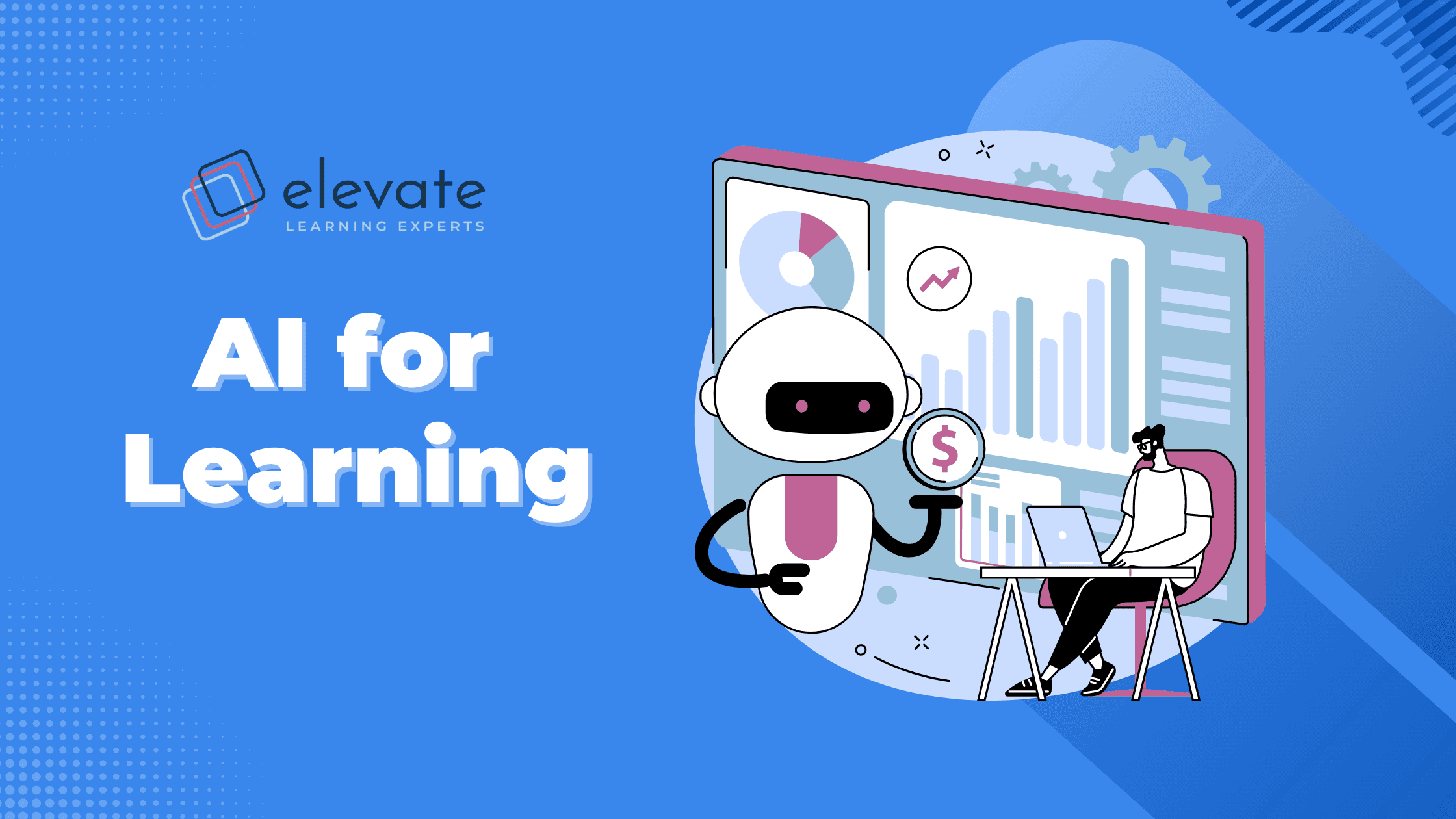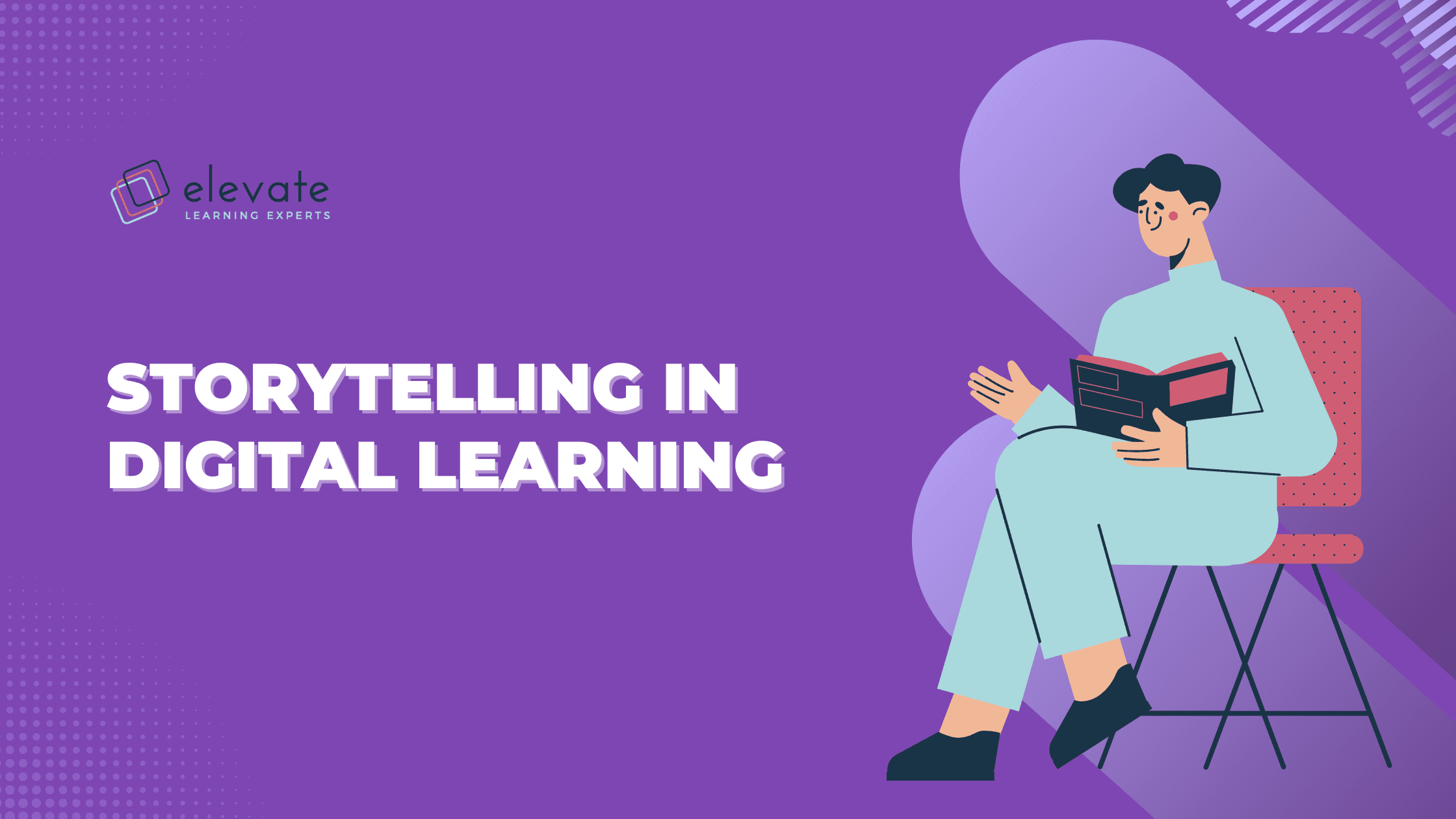“Marketing is not only about being found, it’s about being chosen. The same applies to learning design: it’s not about making content available, but making it irresistible.”
- Andrew Davis
One of the main goals of Learning Experience Design (LXD) is to activate behaviour change. This means that learning designers should always focus on the learners’ behaviours that need changing, and ensure that the learning experience is user-centered, goal-oriented, and design-focused. Because when we design with the users’ needs in mind, we take into context their environment, abilities and potential, resulting in a learning experience that accelerates personal growth as well as organisational success.
But aside from focusing on your learners, how do you encourage them to not just buy into your course, but to take action? To practise new behaviours, to develop new competencies or to influence and change mindsets?
This is where we can learn from our colleagues in marketing. Marketers have long held the belief that the customer is always right (Dalpes, 2023). But what this mindset helps us to do is not to give away free products when a customer experiences poor service. Rather, it helps us to design experiences for users that enable us to meet them where they are. Whether that’s online or in person or both, adopting a customer-centric mindset is key to ensuring a learning experience or product satisfies their needs and adds strategic value.
Over the past few years, there has been a significant shift in LXD towards a user-centered approach. Rather than focusing solely on what stakeholders want, the emphasis is now on meeting learners’ needs and delivering experiences that are tailored to their specific requirements. To further enhance this capability, here are five marketing principles to apply to your next digital learning experience design process.

Principle 1: Define Your Target Audience
Learning, like marketing, is about delivering a specific message to a specific group of people. So identifying who your target audience is when designing learning is key to ensuring it meets your learners’ unique needs.
We also learn from marketing that people are more likely to use your service and be loyal to and engaged with it when they resonate with its purpose. This means that empathising with your learners from the needs analysis phase and throughout the design of your digital learning experience will ensure you adopt a user-centered approach and create learning that adds value.
One technique that we utilise is the creation of learner personas. This helps to hone in on the problem we are trying to solve through learning, and encourages us to feel empathy for prospective learners, ensuring that the learning experience is user-centered. In this context, a persona refers to a fictitious character built on realistic assumptions and characteristics of various individuals who will be connected to your learning experience. These personas could be company representatives, potential learners of your course, administrators of your digital learning platform, managers assessing output or performance, or strategic stakeholders.
While developing these personas, you’ll need to ask yourself various questions about them, such as, what motivates them? What would they hope to achieve through an online course? Where and how do they feel like hearing about it? Answering these questions within your marketing strategy will help you get to know the target demographic you are trying to connect with.
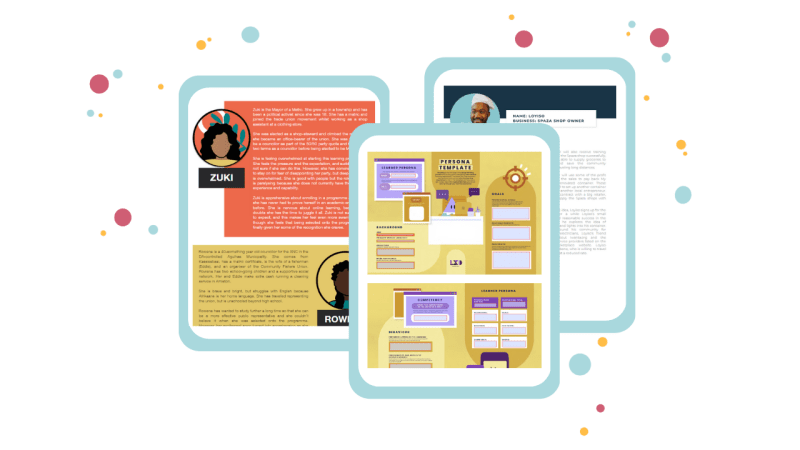
Image 1: Examples of personas created by Elevate Learning, along with our Learning Experience Design Essentials course learner persona template.
For more on the what, how and why of learning persona, check out our carousel here.

Principle 2: Create Strong Brand Positioning
Your learning strategy, course, or platform, like marketing, should have a clear brand. By having a very clear sense of your brand and purpose, whether that’s an overarching visual brand and style or tone, or a consistent reference to your purpose, you hold the power to position yourself and your learning product as something your learners or employees not only want, but need.
Your learning brand is important to define because people are more likely to buy into your product and will be more loyal, connected and engaged with it when they resonate with the purpose.
Similarly, by having a very clear brand identity that encompasses your visual identity, tone, and reference to the values you represent, you are able to position your learning experience as not just a ‘nice to have’, but a solution that directly solves a problem your audience is experiencing. This can be achieved simply by creating a consistent visual identity for an online course you’re developing — using a simple set of icons to signpost different activities in a learning experience, creating banner templates for lesson headings, or a clear brand style guide for posting on social media platforms.
In addition to telling the story of your learning experience through your brand visuals, it’s important to also connect to your potential and current learners through storytelling. Ensure that your message touches on your learners’ personal and organisational objectives by sharing learner testimonials or develop relatable scenarios and stories within your learning experience that appeal to your learners’ current contexts. This sense of connection is enhanced when you are sure of your brand position and purpose.
When you meet learners where they are and communicate with them in a way that is relevant and impactful, you will land your learning message. This principle is the same way advertisers sell products and services to you when you don’t even realise that they’re doing it! Be intentional about how, when, and why you communicate with your audience, and it will all contribute towards a successful and impactful learning experience.

Principle 3: Build Social Proof
The success of many a digital marketing strategy has relied on its ability to connect — customers to brands, to each other, to a perception, or to a community or a celebrity. When you’re buying a new product, you might look at customer ratings or testimonials before making a decision to take action. Or, you might look at their online presence, perhaps scroll through their social media feed, or be influenced by a comment or post by someone you know or respect who has had a positive experience with the brand, service or product.
The way that social networking platforms have enabled brands to reach their target audiences more directly and purposefully is not dissimilar to the reasons why classroom-based learning continues to be popular as a mode of delivery in learning — because learning (and marketing) has always been a social experience — taking place in classrooms and lecture theatres, with instructors, tutors, teachers and peers providing expert guidance, social proof, or a sense of belonging and community.
Online learning can sound like a lonely and daunting experience, but it doesn’t have to be. Take a look at a video from our Learning Experience Design Essentials course below which outlines some tips for incorporating social learning into your online learning experiences.
Social interactions and opportunities to connect with others can enhance learners’ engagement, collaboration, and communication, reinforcing the experience and the perception or reputation of a brand. But with the rise of asynchronous and blended learning, how can learning experts try to combine the growing demand for self-directed online learning with the social needs of learners in order to reinforce the learning message?
Here, it’s beneficial to understand where your learners are already engaging with others online, what their digital behaviour looks like and how you can translate the in-person social experience to the digital space. How could existing platforms be utilised as interactive learning tools? Think about WhatsApp or LinkedIn for example, and how you could create engaging online communities that connect through learning together and sharing insights, questions, and achievements.
Learners can use these platforms to share their reflections on the course content and to connect with others doing the same thing. Furthermore, they can be used to not only encourage engagement but could be used for discussion prompts, to share interesting links, to offer discount codes, and provide additional learning resources or materials.
These social experiences are a key motivator in the traditional learning space and equally as a means of selling products or experiences online, because the sense of community created through reflecting on a shared experience, whether that’s learning or using a product or service, can enhance your brand and marketing message.

Principle 4: Set Measurable Goals
As the old saying goes, what’s measured is managed, and like marketing, learning also requires tangible metrics. When marketers set out to develop a new campaign or launch a new product or service, they start with setting specific, measurable goals. Whether these goals relate to sales numbers, hits on a website, email campaign opens and clicks, or call-to-action conversions, there are always specific success metrics and clearly defined tasks and activities they are looking for customers to do.
Similarly with learning experience design, setting high-level goals such as overarching learning objectives or competence-based outcomes you intend learners to achieve, or specific activities they need to complete throughout the learning experience, understanding what will ensure your learning is a success and writing out specific goals to that effect is half the battle won.
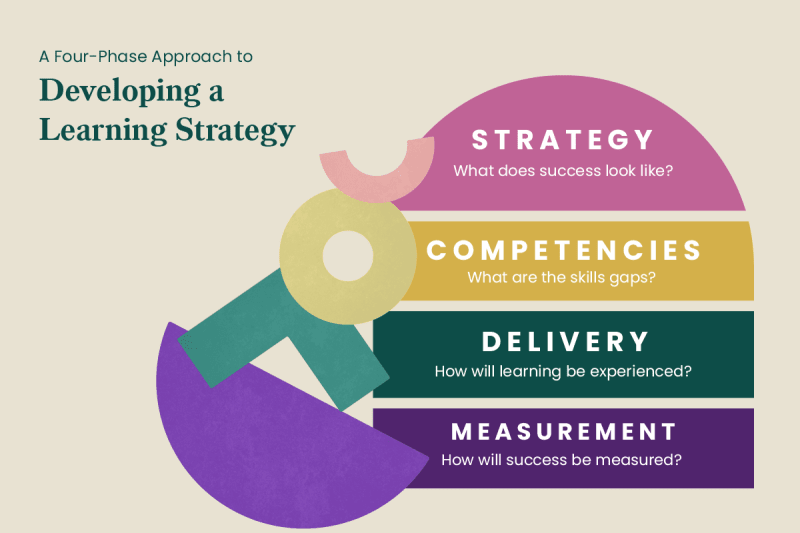
Image 2: Elevate’s four-phase approach to developing a learning strategy. To learn more, enrol in our Learning Experience Design Essentials course.
For example, one way to measure the success of your learning experience might be through course completions. So, you’ll set a goal for x number of completions compared to enrolments and then assess the total number of completions within a certain timeframe.
There are a number of different ways to measure the success of your learning experience in addition to course completions, so you may want to set additional goals that assess the learner’s experience in general. Then, in order to assess whether you’ve met those goals, you’ll need to gather evidence and analyse the data. Consider the data points you’ll need to gather to support any insights you may want to infer, such as course feedback, assessment results, learner engagement on the discussion forums or activity completion.
Figuring out what’s working and what’s not by gathering learner feedback, measuring the completion of certain activities you set up front as an indicator of success, and iterating on your learning experience design is an important part of the process. Your work isn’t done as soon as you’ve launched a new course. Your learners’ wants and needs will also expand and change over time, and the power of digital is that it enables you to adapt your learning sustainably. Use the data you’ve gathered and continuously enhance and update your learning experiences to meet your learners where they are, and then measure your success against your new goals continuously.
Taking this iterative, goal-based approach allows you to adapt your content to context-specific circumstances, making your interventions more user-centric and successful in the long term.

Principle 5: Make Your Content Stick
Learning should also be sticky. A good way to do this is to borrow another tool from marketing — priming. Learning Transfer expert, Fergal Connolly, says that priming is a phenomenon in which exposure to one stimulus affects the response that one has to a later stimulus. For example, smelling freshly baked bread before walking past a bakery or seeing a shopping basket on an e-commerce website. In other words, when we’re subconsciously exposed to a certain idea, product, perception or visual when the opportunity arises to fully engage with that experience, we are already comfortable with the concept.
As it relates to learning design, this could involve previewing or teasing some of the learning content ahead of time.
Before the launch of your course, send prospective learners an overview of the course with some of the content and ideas that they’ll be exposed to. Tell them why, what they’ll be able to apply once they’ve completed the course or the benefits they’ll gain from the experience, using the branding or visual identity you’ve created.
Providing an overview of the learning objectives before a learner starts a course, or creating an introductory video or glossary with key concepts that will be used in the lesson are all helpful ways of priming the learner for what they will be experiencing. Another example might be when a learner gets to the end of a chapter or lesson, prime them for what’s coming next by stating this in your instructional text.
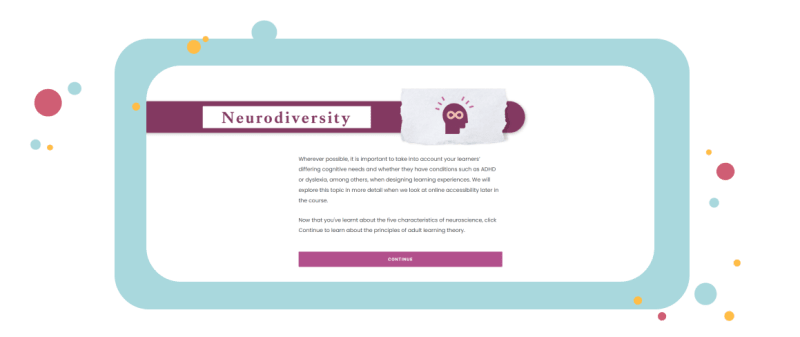
Image 3: An example of a learner being primed for what’s coming next after reaching the end of a chapter.
Similarly, having learners practise a scenario-based activity before completing a summative assessment with similar types of questions helps them to also subconsciously put their new knowledge into practice without the finality or pressure of a final assessment weighing on the experience. Connolly adds that priming can also reduce stress and anxiety by introducing learners to the topics that will be covered, and what will be expected of them, thereby contributing to more effective and successful learning outcomes.
Final Thoughts: The Need to be Multidisciplinary
Designing effective digital learning experiences requires a multidisciplinary approach that combines expertise in pedagogy, technology, psychology, user experience design, data analytics, and marketing (as we’ve seen in this article). Marketing, much like learning design, is all about human behaviour. Being truly learner-centered has nothing to do with us as learning designers, and everything to do with the learner, and if you maintain this mindset throughout the learning experience design process, then you will be able to intuitively create user-centred learning, and consequently, be successful in meeting your learning goals.
By taking a multidisciplinary approach to learning design, L&D experts can create experiences that are engaging, effective, and impactful. Ultimately, the goal of digital learning design is to change human behaviour and encourage learners to take action, and by utilising a variety of disciplines, we can better achieve this goal.
References
Dalpes, K. (2023) 5 reasons why the customer is always right in 2023, Zendesk. Available at: https://www.zendesk.com/blog/the-customer-is-always-right/ (Accessed: March 13, 2023).
Elevate Learning (2022) “Social Media as a Cooperative Learning Tool,” Elevate Learning. Elevate Learning, 15 June. Available at: https://www.elevatelearning.org/insights/social-media-as-a-cooperative-learning-tool/ (Accessed: March 13, 2023).
Elevate Learning and Studio Zafari. Learning Experience Design Essentials. Retrieved from: https://www.fergalconnolly.com/_files/ugd/075e67_9f7b7aeee37542f6a719596301e97c0e.pdf
